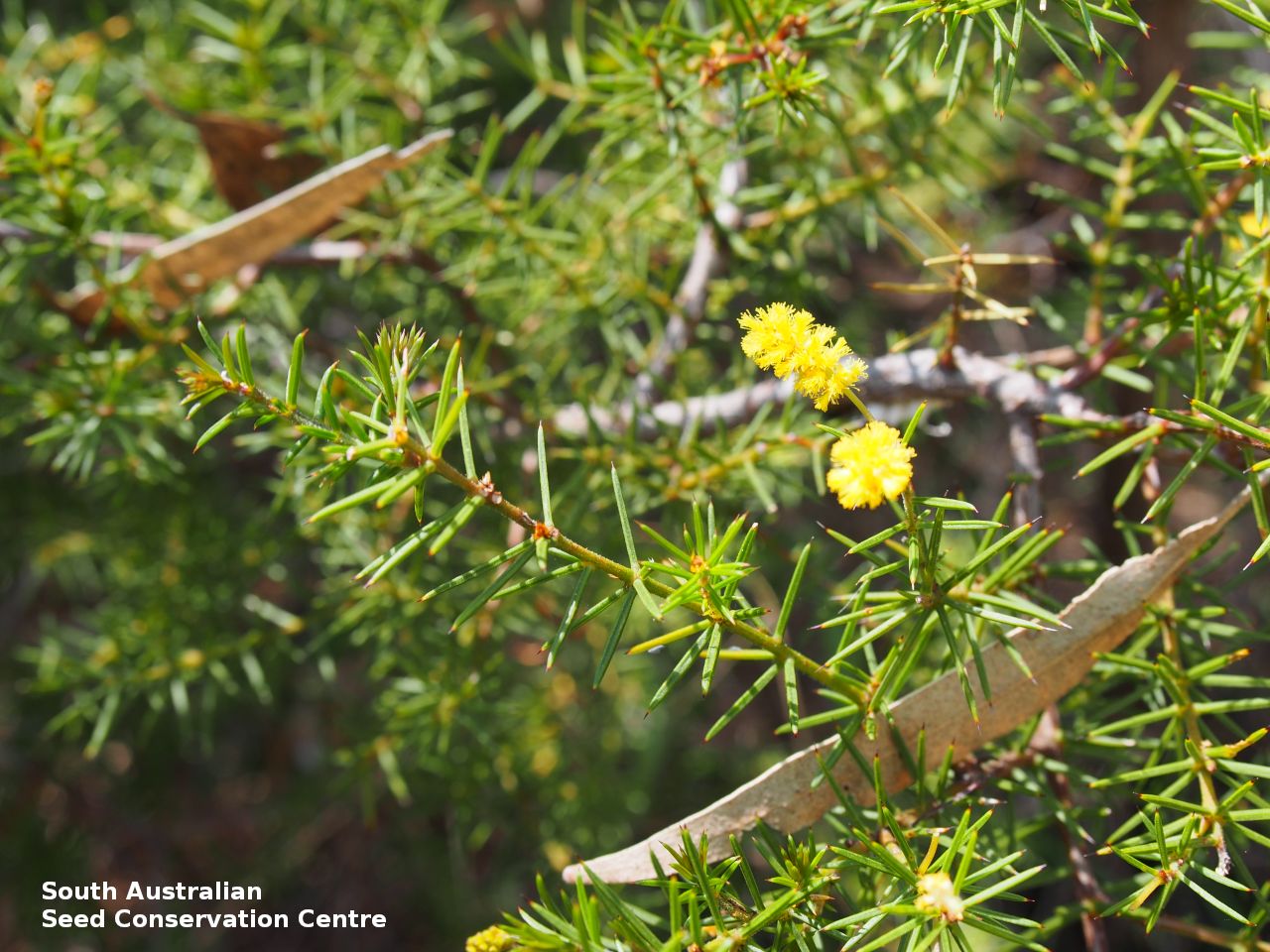














Botanical art
Prior names
Acacia verticillata var. ovoidea
Acacia ovoidea
Mimosa verticillata
Acacia verticillata
Etymology
Acacia from the Greek 'akakia' and derived from 'ake' or 'akis' meaning a sharp point or thorn and 'akazo' meaning to sharpen. Dioscorides, the Greek physician and botanist used the word in the 1st century AD for the Egyptian thorn tree, Acacia arabica. Verticillata from Latin 'verticillatus' meaning whorl, referring to the leaves arranged in whorls or seemingly so. Ovoidea from the Latin 'ovoideus' meaning egg-shaped, referring to the subspecies having flowers in globular or ovoid heads, rather than in spikes.
Distribution and status
Found in the southern Flinders Ranges, Kangaroo Island, Mount Lofty Ranges and the South-east in South Australia, growing in damp places in heathland and woodland. Also found in Victoria and Tasmania. Native. Uncommon in South Australia. Common in the other States.
Herbarium regions: Flinders Ranges, Northern Lofty, Southern Lofty, Kangaroo Island, South Eastern, Green Adelaide
NRM regions: Adelaide and Mount Lofty Ranges, Kangaroo Island, Northern and Yorke, South Australian Arid Lands, South East
AVH map: SA distribution map (external link)
Plant description
Spreading to prostrate shrub to 2 m high. Leaves alternate or fascicled, rarely whorled; often flattened, to 15 mm long and 1 mm wide, pungent tip. Flowers in ovoid or spherical heads to 1.2 cm long. Easily distinguished from other subspecies by its short, pungent, verticillate or fascicled phyllodes, and its densely packed globular or ovoid flower-heads. Flowering between August and November. Fruits are dark-brown, linear pod to 80 mm long and 4 mm wide, flat, straight or curved with pale margins, slightly thickened. Seeds are hard, black, oblong to 5 mm long and 2 mm wide. Seed embryo type is investing.
Seed collection and propagation
Collect seeds between November and January. Collect mature pods that are turning brown, with hard, dark seeds inside. Place the pods in a tray and leave to dry for 1-2 weeks or until the pods begin to split. Then rub the dried pods to dislodge the seeds. Use a sieve to separate any unwanted material. Store the seeds with a desiccant such as dried silica beads or dry rice, in an air tight container in a cool and dry place. Seed viability is usually high. This species has physical dormancy that needs to be overcome for the seed to germinate (e.g. nicking or softening the seed coat).